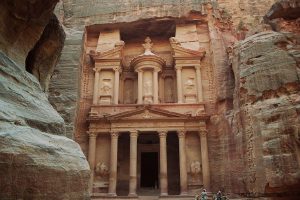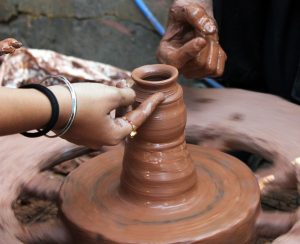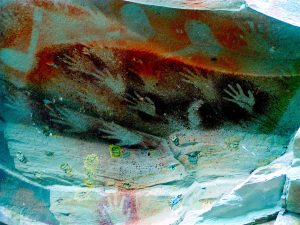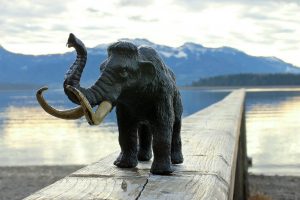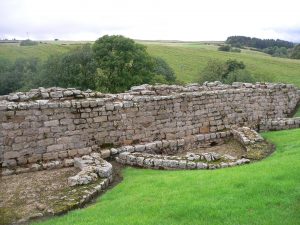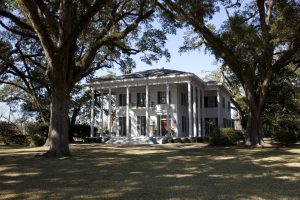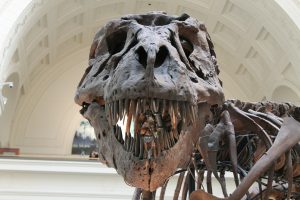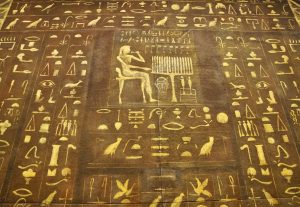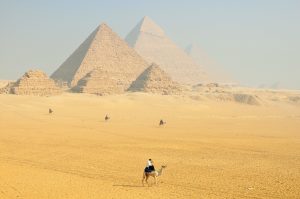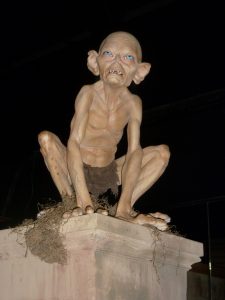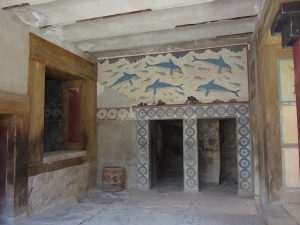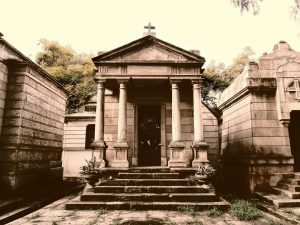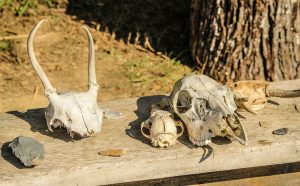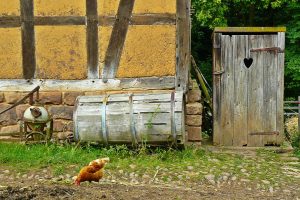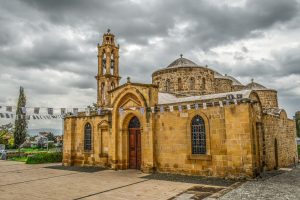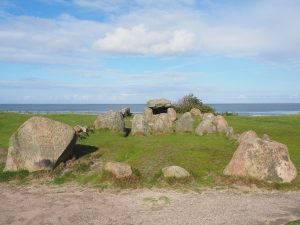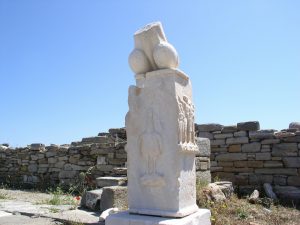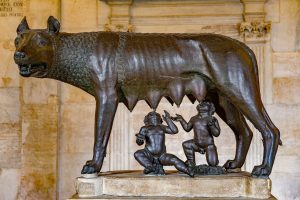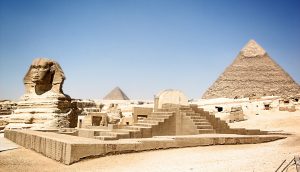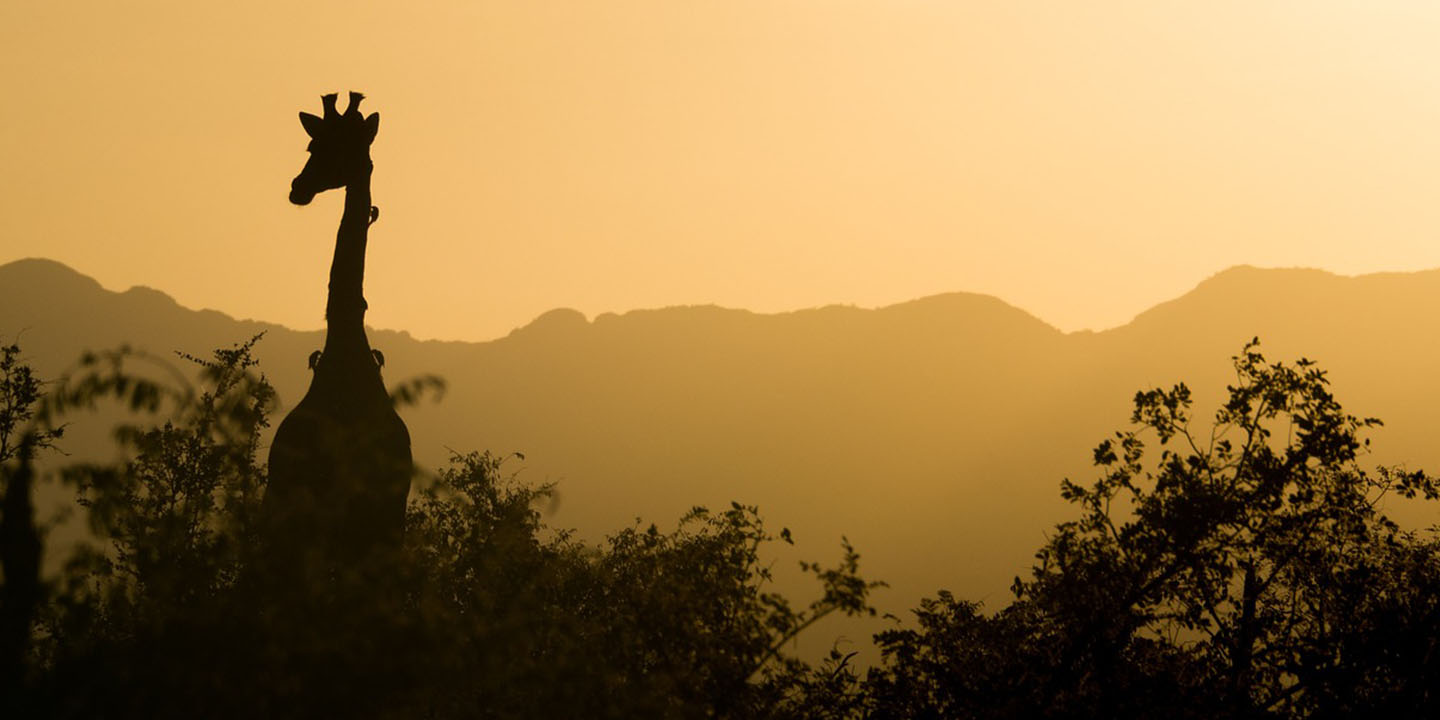The past is really cool. From Stonehenge to the great Pyramids, to the treasury at Petra and everything in between, our ancestors did amazing things. So it is important that we try to preserve and understand their work. This is where archeology comes in. Archeologists around the world dedicate their lives to the study of the past. (Except for Dinosaurs, they don't do dinosaurs, that's Paleontology)
So we got to thinking, what are some cool things people are working on around the world today? What cool new discoveries may be made? We asked people around the world what cool archeological finds they had heard about, and here's what we got.
Disclaimer: This list was curated from internet forums, not scientific journals. If anything in this list sounds interesting to you, we highly recommend doing some of your own research on the subject instead of taking this list as 100% factually accurate. Basically, this list is for entertainment purposes only. Everything else, [citation needed].
Enjoy!
34. "Cylon of Athens" is a really cool name
Don't know how major or interesting this is but in Athens in the area of Faliro (Φάληρο) (which used to be the port of ancient Athens before it was moved to Piraeus) during some excavations for the construction of a cultural center, a huge cemetery was discovered. An entire year of construction was put on hold (and this is a frequent problem in Athens, major construction work running into ancient buried buildings which now have to be preserved).
Apparently, the cemetery is interesting not only because it hosts many dead babies and children, which were buried inside vessels, (infant mortality rate was very high) but also many prisoners and criminals who were executed. There's also a mass grave of about 80 shackled men.
It has been speculated the mass grave may be related to Cylon of Athens, a winner in the Olympics and wannabe tyrant, who tried to stage a coup by taking over the Acropolis but was promptly chased out of there by Megacles (of a powerful Athenian clan) and escaped to Megara. His followers sought refuge in the altar of Athena Polias. Anyone present at an altar was considered to be under the protection of the gods and was not allowed to be harmed. They agreed to descend the Acropolis after being promised they would be left unharmed but were slaughtered nonetheless by the followers of Megacles, as they considered the men unworthy of the gods' protection.
 Photo by AussieActive on Unsplash
Photo by AussieActive on Unsplash
33. To think, it may have just been some kid making a father's day gift
I'm primarily an Egyptologist but I work for a UK regional archaeology crew, and recently they found a specific vessel which was very unusual. It's hard to describe... It was a smallish clay pot, which had been made on a wheel and was incredibly well-made, but the neck of it was tiny, and it pinched in and out at points. Bad description I know. Anyway, we got it dated to around the Stuart era, and gave it over to a potter who we sometimes worked with, so he could attempt to make a copy.
He couldn't do it. He made a lovely pot, but it was nothing like the original. He explained that he couldn't get the clay thin enough to pinch like the original, because his hands were simply too big to make a pot with a neck of that size.
So after a lot of thought, they came to the conclusion that it must have been children making these pots (I suggested women but it turned out even women's hands were too big). Based on other circumstantial evidence from the same context, this was from a relatively poor family, who trained their children in the same trade as them to create beautiful pottery to sell to the elites. In the Stuart era, that style of pottery was around a lot, but it had started not too far from the city we found it in, so we figured they must have been copying the popular style. It's so interesting to think that a child, probably no more than 8, made such a beautiful piece of work.
32. Pics or it didn't happen
A couple of years ago, I worked at an internationally important site. But because it was associated with building development, the most we were allowed to tell the public was that we'd found a bunch of really boring roman field boundaries... In reality, it was a very high-status Roman burial ground, one of the skeletons had an enormous sword and a tonne of treasure buried with it.
31. Well that's pretty neat
This is more biological anthro/archaeology but recently a jaw bone of Denisovan remains was found in Tibet which is crazy since those are super difficult living conditions, even today! ( so far the other remains have been found in Siberia )
Denisovans have only come up in conversation and discovery quite recently so it’s always crazy to find any sort of remains. Really gives an idea to our development and what we might have evolved from!
If you are unaware, Denisovans and Neanderthals lived in the same area. I included this since the original cave in Siberia where the Denisovan remains were found, Neanderthal remains were also found.
30. Gotta love archeological ghost stories
We discovered a previously unknown ice age human population in southern Arabia.
We only just published recently, so this is kind of a preview. What I find far more interesting than the artifacts from Matafah is the potential correlation with the phantom Basal Eurasian population. They may be one of the most important genetic discoveries of our time.
So there is a growing body of evidence from ancient DNA extracted from modern human fossils between roughly 50,000 and 10,000 years ago. When geneticists compare the ancient body of genetic evidence versus the modern population, they find four major lineages outside of Africa: 1) Hybrid human-Neandertals in Europe, 2) Hybrid human-Denisovans in northern Eurasia, 3) Near Eastern farmers, and 4) Basal Eurasians.
One thing that makes the Basal Eurasians so interesting is that they are missing from the contemporary global population. We find fragments of them in the highest percentages among indigenous Arabs. Basal Eurasians show up in ancient Near Eastern skeletons, who were the immediate precursors of Neolithic farmers.
The Basal Eurasians are thought to have been the direct descendants of the first humans to have left Africa. My team and I have been working in Dhofar for the past twenty years looking for evidence that it was an ice age refugium - meaning an isolated place where there was enough food and fresh water to survive the hellscape that was the Last Glacial Maximum. The Gulf is another one of these potential human refugia where humans could have survived. In this case, there are interesting implications for mythological traditions in the Arabian Peninsula, calling into question the durability of oral tradition.
Basically, Basal Eurasians are a ghost population; a missing quarter of all contemporary people on earth, who went extinct after 10,000 years ago.
29. Some archeological drama for you
At the museum I work at right now, we have a mammoth bone that the museum is claiming has human processing marks. They refuse to let other anthropologist look at it to really examine the marks… So I am calling shenanigans or at least I’m skeptical. I got to look at it very briefly along with some other anthropologists, but then the museum stopped everyone. It has everyone pretty split. It was found in San Diego and if this was to be true, it would rewrite everything about human migration we know. This is not a small museum, this is a public museum that is making a large claim. A lot of infighting right now.
28. This sounds amazing
Recently a ton of phenomenal finds has been excavated in Britain. Examples being a preserved iron age shield found in Leicestershire, which changes how we perceived Iron Age British tribal equipment in combat, hoping it will open the door to a broader understanding of the military capabilities of this period, and that C14 dating will give us a more specific dating assessment.
I've mainly worked in classical Greek and Imperial Roman archaeology and Vindolanda is one such site that has been pumping out phenomenal research and artifact findings. Being a reasonably well preserved Roman fort along Hadrian's wall, artifacts are found daily. During the past couple of weeks, finds have ranged from leather shoes, tent canvas, even bathhouse sandals to prevent you from burning your feet on the hot tiles. These finds have opened a window of immense understanding of daily life within a Roman defensive fort.
I would most definitely recommend volunteering on the dig at Vindolanda, as it is always a pleasure to have people show an interest and an appreciation for our shared and fascinating history. It's a wonderful opportunity to see first hand as to why these artifacts need to be preserved and cared for in a manner that we can learn from. If you do decide to volunteer, be prepared for a lot of trench work in the rain, and a lot of watching and learning from archaeologists on site, as site excavations are as delicate as a crime scene, as you try to piece together the mystery of the finds.
If you have any linguistic background or are great at decoding or solving mysteries, that always helps as well. There's always a need for a cross-disciplinary approach towards excavations of fort complexes, from climatologists to architects to historians, so any skill to add to the list needed on site is always appreciated.
It will be an amazing experience, plus archaeologists are the most welcoming bunch and love to drink, eat, and tell stories after a hard day out at the site. Especially if you dig in the Mediterranean.
Greek food is something I crave daily. Unfortunately, there is not a lot of paid work in Ireland, and I can't be going abroad for site digs on and off each year, so I moved to Tokyo to make money teaching Irish culture and history to then save up and go back to university once again.
27. Of course it was in Alabama
I'm an archaeologist who mostly works in the private sector. We find a lot of cool stuff, but almost everything we do is classified to some degree or another to discourage pot hunters and vandalism. This year I've found an extension of a really important Late Woodland (the period right before Europeans arrived in America) site, and worked on a very cool 19th-century burial ground that had been partially destroyed out of negligence by a construction company, which is a big problem we run into. Both sites were super cool, but I can't get into specifics about where they're located!
The remains of the last slave ship to smuggle imported slaves into America, after it was outlawed, was just found in Alabama. I don't know a lot about it because I'm not an underwater archaeologist, though.
26. Things like this should be much more illegal than they already are
I don’t know if it’s national news or anything but a bunch of fossils and bones of some sort of horned Dino were just found on a construction site in Highlands Ranch, Colorado. My cousin's boyfriend was one of the workers that found them. Some jerk on his team was trying to load his truck up with a bunch of the fossils and bones and destroyed them, the museum had to confiscate stuff from him. But it’s still pretty cool that Colorado has another dinosaur!
25. Very, very cool find here
The Tomb of Neithhotep was discovered in the early 1900s, but it was badly damaged and therefore we're still investigating all the material we have. A lot of it was burnt by tomb robbers but there is still some epigraphic evidence.
One of the most interesting pieces is a tiny piece of pottery with a serekh on it, the symbol of the name of the king. For context, Neithhotep was from Predynastic Egypt, just before the first dynasty. And this is where it gets exciting - Neithhotep is believed to be the mother of the first pharaoh of Egypt. However, on this piece of pottery, her name is written in a serekh. Indicating she was a pharaoh. Of course, its possible that it was just indicating her as Queen, but it's quite fun to think that there's a very good chance the first pharaoh of Egypt was a woman. Furthermore, as far as we can tell, this is the earliest ever surviving evidence of a woman's name written down. We all thought that was pretty cool.
24. Given what typically happened to Native Americans when Europeans showed up, they made the right choice
I'm surprised at the mass amount of people that haven't heard of the Luna Settlement in Pensacola, FL. It was the first European multi-year settlement in the country and dates to 1559! The story is tragic and we have the unique opportunity to not only investigate the land settlement but also the shipwrecks right off the coast. About 1500 people (Europeans, Aztecs, and mulattos) came to the Pensacola region to gain a footing in this region because every other explorer failed to do so (short story, they all died). Anyways, they had about 12 ships and a couple of months after landing a hurricane came through and decimated them. They tried trekking to nearby and faraway native villages for supplies. All in all, only a couple hundred people survived. They were basically stranded for 2 years.
Additionally, I am working on a Native American site across the bay this summer. We are trying to see if natives were present during Luna's time here because it appears that the natives just peaced out when they saw the ships rolling up through the bay, which may explain why they didn't help him and his company. Very cool history here. I highly recommend looking it up.
I think it will gain more popularity in the coming decades. I mean, the settlement was only found 3 years ago. There are no maps of the settlement to show where anything was, so we are just blindly reconstructing everything. And hopefully, more ships will be found as well this summer! The Pensacola public is already obsessed with it, as is Spain, so I think it will spread in popularity in the coming years.
23. Quite interesting
I don't specialize in Ancient Egypt (my focus is on Greek and Roman Mechanical Technology) but a really interesting paper came out about the great pyramids that seem to explain a lot about them. I personally thought the theory was really compelling but I'm interested to see what people who are actually experts in the matter have to say about it.
It suggests that water from a lake was used to half fill the pyramid before escaping from the hidden door in a waterfall like manner and created a moat around the base of the pyramid, and it seems to take into account all of the weird chambers in the pyramid that people haven't been able to explain, and it corresponds well with ancient writings on the pyramids such as Herodotus and Strabo.
22. I've always been a fan of ancient Mexican culture
It's difficult to talk about things that have been found in the field, but not formally published. The act of publishing is where all the background information, theoretical models, data collection, and analysis go to offer interpretations of finds found in the field. Like, you may have found a tomb, but you can't say much more than it is a tomb, the location, and a general overview of the contents without sitting down and doing the analysis of the mortuary goods, the skeletal remains, and the soils and then comparing all of that to other known excavated tombs to find similarities and differences on a regional, temporal, and/or cultural scale.
So as a rule, archaeologists tend not to talk about things they found in the field until they've had a chance to do all that work and get a publication either in the process of being published (review and edit stage) or the publication is scheduled to come out soon in the next issue of a journal.
There's a lot more work that goes into archaeology than many people realize. It's not just digging in the dirt, giving what you find a cursory glance, and making broad sweeping proclamations about the past. There's radiocarbon samples, ceramic sherds, chert/obsidian, bones, metal, fibers, soil, pollen, faunal remains, floral remains, etc. that can and is tested to inform us about the dates of occupation, where clay or chert/obsidian sources are located, the DNA of a person or the stable isotope value that indicates where they grew up, the sources of metals, what plants or animals make up the preserved fibers, chemical signatures in the soil that may indicate certain kinds of activity, the types of plants being grown nearby, and the animals and plants people consumed. It's a monumental undertaking to do archaeology.
I work in the Tequila Valleys of Jalisco, Mexico. In the Tequila Valleys, from roughly 300 B.C. to 550 A.D. lived a culture that we call the Teuchitlan culture. The people of the Teuchitlan culture were contemporaries to the better-known people of Teotihuacan, the Zapotec of Monte Alban, and the Maya of southern Mexico, Guatemala, Belize, and parts of Honduras and El Salvador. Unlike these other cultures, the Teuchitlan culture did not build step pyramids. Instead, they build circular temple groups that we call guachimontones. There are dozens of these buildings spread out across the Tequila valleys and their exact purpose and the symbolism/ideology associated with them is still uncertain.
Last year I undertook a remote sensing/GIS analysis of a number of these guachimontones to test the hypothesis that the buildings were oriented to one or more mountains that the Teuchitlan culture held to be sacred. Sacred mountains are not an unknown belief in many New World peoples from the U.S. Southwest all the way down to the Andes. To do this analysis I created a series of viewsheds radiating out from the center of a guachimonton and through the centerline of each of its platforms to see whether it fell on a prominent peak in the distance. Based on my very restrictive criterion and small sample size, I found no discernable pattern. However, there are more sites I can test and other ways of testing (wider viewsheds, testing the spaces between platforms rather than the platforms) that I can and will do in the near future. Even though I did not prove my initial hypothesis, I'm not bummed out. In fact, the Teuchitlan culture seems to fit the norm of the rest of Mesoamerica in that even though pyramids are associated with mountains, the pyramids are not necessarily oriented towards an actual mountain.
21. I take back what I said about Neolithic times
Quite recently (in academic time so 2015) they discovered a massive burial site in France at Lavau occupied from 1500 BC up to 500 BC. Among other burial there is a massive 43 meters diameter tumulus with a monumental peripheric ditch (8 meters deep, 3 meters wide). The tomb itself is one the wealthiest of the period: huge cauldron which is a stunning work, gold jewelry, Greek importation and so on. This tomb takes place in what archaeologist called the Chariot burial phenomenon where some people gathered huge power and wealth and constructed a massive burial monument during the first part of the Iron age (800-475 BP). If you're interested you can easily find info on 2 other well-known tombs: Vix (with a Greek metallic vase as high as a human) and Hochdorf.
If you're into the creepy stuff they discovered a Neolithic village at Herxheim (Germany) where a ditch crosses all around the village and the ditch, they are entirely filled up with human bones with a trace of what is supposed cannibalism. There are approximately 500 peoples in those ditches. Herxheim is interpreted as a ceremonial site.
20. Hobbits are real
In April 2019, a new hominid species (human species) was declared in the Philippines. This has been ongoing research since 2007 but the research study was only recently unveiled to the world. This species shares commonalities with many of its contemporary humanoids (sapiens, neadertalensis, floresiensis). With the current finds, it is believed that h. Luzonesis was short (less than 4 ft. tall) just like its Indonesian cousin h. Floresiensis.
It's quite fascinating research
19. Swords are cool, though
Not sure how well the wider world knows about it, but an Anglo-Saxon burial has been discovered in Southend, which has some amazing finds in it. Currently, it has the only surviving example of painted Anglo-Saxon woodwork, it contains gold artifacts as well, but the woodwork is the real treasure here, at least to some. The papers briefly picked it up, but it's truly a brilliant find.
There was also an Iron Age Chariot burial in Pembrokeshire, the first of its type for the area I believe; they had been associated with the Parisi in Yorkshire, but this shows the practice wasn't confined to that area. Similarly, its the first example of La Téne artwork in Pembrokeshire.
I find that the public at large is more focused on golden artifacts, swords, etc. But things like Pottery and artwork are so much more interesting to archaeologists as they can tell you so much about the people. My old Lecturer said that you could tell an archaeologist by the way he reacted to ceramics.
18. Throughout history, humanity has always wanted one thing: To party
Discovery last year of a ceramic wine vessel, decorated with grape clusters, from Tiblisi, Georgia, pushing back the archaeological evidence for a functioning winery and vinicultural industry in the Transcaucuses 1000 years (from Areni One and Hajj Furiz Tepe) to over 8,000 years ago.
17. I've long held the belief that the destruction of the Minoans was the basis of the Atlantis legend
My understanding is that results from studying the 2004 tsunami in Indonesia had led to conclusive evidence that Minoan Crete was destroyed by the tsunami caused by the Thera eruption (modern day Santorini).
That’s fascinating by itself, but when you consider that the only primary source for Atlantis is Plato (all other references to Atlantis throughout antiquity are based on Plato’s), that the Thera eruption and fall of Minoan Crete predated Plato by about 700 years, and that Plato’s purpose in describing Atlantis was didactic (that is, his purposes did not require historical accuracy, even if such accuracy were possible), it becomes reasonable to conclude that Plato’s description of Atlantis, and therefore our entire modern legend of Atlantis, is based on the destruction of Minoan Crete by a tsunami: An advanced seafaring civilization, ancient even in Plato’s time, swallowed by the ocean.
16. But it might not be
At the end of the last Ice Age, there was a swift drop of temperatures to much colder than it was even during the end of the Ice Age. It lasted for centuries and coincides with the extinction of many species of the Ice Age fauna (various mammoths, rhinos, cave bears, cave lions...). It was speculated about what caused it and there was a hypothesis, which was considered pretty much obscure by many scientists, that the impact of an asteroid/comet caused it.
In November 2018, a crater in Greenland was found that might be - might - from that time period and if it were, would be a game-changer in our understanding of why so many species went extinct.
15. Mound people are cool people
Around St. Louis, Missouri there is a place called Cahokia Mounds. It holds the largest Earth made mound in the world, called Monks Mound. It’s larger, in surface area than the great pyramid if I remember correctly. Cahokia was also thought to be a city of around 30,000 people at its peak. No one is for sure what wiped out the city. The site also had a solar calendar made with large wooden posts in a circle and they would use a pole on Monks Mound to track a major solar event, summer solstice maybe, I’m not certain. It is also theorized there were also more marker poles stretching far out into the outlying prairie around the outskirts of the city to track it as well.
14. This guy seems like he's fun at parties
Most of the discoveries listed here are discoveries the public does have some idea of, due to media posts and publications. But, we found something on my project this week that literally only four people in the world have seen. And now it's in a secure container on a way to a secure location in a vault below the National Museum in Jerusalem. And if you want to know why things like this are never talked about, I suggest you look up stories about metal detectorist treasure hunters. I wish archaeology wasn't like this, but unfortunately, it has to be.
13. I want to be buried in a way that 10,000 years from now someone finds me and loves me
A monumental intact Mycenean tomb within a graveyard that probably contains even bigger tombs. It was one of the largest tomb unearthed in Greece so far. It is also very rare to find one of them intact and not looted. The ceiling of the grave chamber had collapsed already in ancient times, burying the grave goods and the body, preserving them extremely well and keeping away looters. Additionally, a lot of botanical and geological samples were taken during the excavation which will hopefully lead to interesting insights about how the tombs were built, if and how often they were reopened etc.
12. That's somehow not surprising
The evidence from Verteba cave by Bilche Zolote, Ukraine suggests the Neolithic/Chalcolithic farmers (Cucuteni-Typillia) were violently wiped out by steppe nomads. These nomads just so happened to be the first white Europeans. Just like in the Kurgan hypothesis (which is old but this supports the premise)
To avoid my possible misinterpreting of work outside my personal research projects, please read Jordan Karsten's publications on the matter as a branching point if you are so inclined.
11. Just imagine how much knowledge we have lost
I recently helped do some magnetometry at a site in southern Indiana in the middle of a boring cornfield that revealed underground features nearing the level of significance found at Cahokia. For those who don't know, Cahokia is a site just outside St. Louis of a Native American city that was more populated than London or Paris around the year 1000c.e. It's a really amazing site featuring 2 of Indiana's 5 largest earthwork mounds, one of which has a 100 meter long building or enclosure AND a woodhenge on top of a platform mound. The settlement areas are absolutely strewn with artifacts that are being dug up and ruined because the state allows farmers to rent out and plow the mounds every year. It kills me.
10. Archeological fun for the whole family
There's a place about an hour from Pittsburgh, Pennsylvania called Meadowcroft Rockshelter. Its actually a pretty huge find because it completely changed everything we knew about early Human Settlement in North America. The site dates back to 19,000 years ago, making it the earliest known evidence of Humans in the New World.
It also became the basis on which other dig sites compare their finds. For example, Meadowcroft had an arrowhead that was very unique and only a few other places along the Appalachians have found anything similar.
Its a really neat place. They let kids do mock Archeological Digs and they have a Colonial Village with reenactors who live there for some time.
9. Poor kid
A fetus or young infant was recently found in a privy in upstate New York that dates to the late 19th century.
It's no Nero's palace but it was an interesting find and the report about it was well written and researched. My job is rewarding when we can give dignity and a voice to those forgotten to time.
To give a little more context, the privy was associated with mill workers' housing and this population was 60-70% women.
8. You're still gonna want at least a lvl.5 shield before tying PvP, though
A 2,300-year-old shield made from bark was found a few years ago in England. Tests on a reproduction showed that, while not as strong as a solid wood shield, it still provided effective protection against thrusts and blows.
7. Them crazy Byzantines
In Eritrea, they are currently working on uncovering the port city of Aksum Adulis. So far they’ve found a Byzantine church. (I forget its dating. ) An Italian university group is the lead of the Adulis program. They are still trying to dig up the rest of the city which is about 40 hectares. They’ve managed to do just a small percentage of that.
6. This sounds made up
In Greece they may have found the grave of Alexander the Great, the whole area was shut down and guarded by the military. Many trucks came and loaded probably tons of gold etc. Nobody knows what happened to the stuff. The government made a secret out of it and only locals know about this.
5. Sometimes I wish I could live in Neolithic times
Last year I was part of a team excavating a Neolithic causewayed enclosure; pretty awesome as I believe only 80 have been identified and 20 or less excavated but also the last excavated enclosure found roughly 2-3 kg of pottery total while we recovered that much from a single metre slot (plus a lot of really nice flint tools and debitage). There were also a number of likely related pits and a potentially even older (maybe mesolithic dating is still being done to my knowledge) sub-rectangular structure close by alongside late iron age to mid Roman settlement.
As these enclosures are not at all well understood it was an absolute pleasure to get to work on one even if it did get way too hot.
4. Imagine traveling back in time to tell this man that his only imprint on history is his parasite-infested poops
In my hometown of Luebeck in northern Germany they found a latrine from the middle-age and analyzed the genes of the tapeworms in it or something and apparently that dude that took a dump there has once also taken a dump in England cause his DNA has been found in tapeworms there as well.
3. Cue the CSI Miami theme song
In the 1960s two headless skeletons were found in a latrine of a house on the Greek island of Delos. This is a big deal because Delos was a sacred island and no one could be buried there, instead, there was a cemetery on the neighbor island. But what is even more interesting is the excavators could not find the heads ANYWHERE. But what is even MORE interesting is that within this house was the largest single collection of phallus statues.
So fast forward to 2014, excavations were beginning again at this same house and they found the heads two rooms over. It has been suggested that because of their unusual burial context (in the latrine), the fact that they were decapitated, and the fact that they were on Delos at all indicated that these two individuals were murdered!
2. It belongs in a museum
Years ago a guy in Finland was metal detecting and found a small metallic wolf head figure that the Finnish museum officials at the time said was just a piece of garbage. After a recent re-examination it turns out it is similar in design and composition to the type of figurine popular with Roman troops and the find might mean that their trade routes reached way further north than just Denmark. Circumstantial evidence dates it to the Middle Ages, but more research is needed. Either way, it is a very significant find. The lesson here I guess is to always get a second opinion on your findings, this one might have ended up in the trash otherwise.
1. I went there in Assassin's Creed
There have been sonar checks under the Sphinx and each one of them says there is a room down there but nobody can check because the head archeologist there is a jerk and won’t let you.


